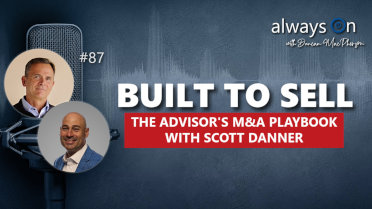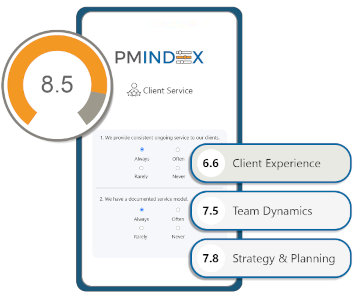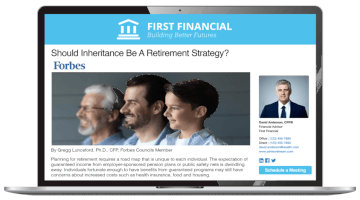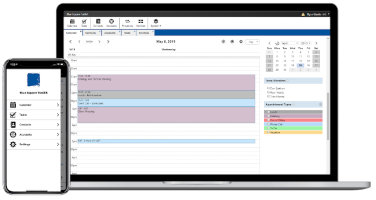Work Half as Hard - Earn Twice as Much

I'll never forget the first time the concept of client right-sizing occurred to me. An advisor was referred to us, and was inquiring about our coaching process. Within 10 minutes, I learned that he had over 900 clients, that he was making a ton of money and that he had no life. He was stressed-out, out of shape and had a whole host of issues going on in his personal life. Clearly, the business was running him rather than the other way around. Then the advisor said, "I've heard good things about you. I'm thinking about hiring you to help me grow my business."€
My reply to him was simple: "I think the best thing I can help you do is dismantle this thing." My logic was that he had maxed-out and his growth was now starting to cost him more than it was getting him. It wasn't easy, and after some initial resistance, this advisor went from close to 900 clients down to about 200 clients. In short order, his stress and overhead went down while his productivity increased. Best of all, liberation and order were restored to his business and personal life.
Shrink your Way to Success
Many elite advisors tell me that they feel they have hit a plateau and they are having difficulties taking their businesses to the next level. In my experience, they hit this plateau because they still subscribe to the alleged precept that you must continually "grow or perish." For a knowledge-for-profit professional, that is a fallacy. The maxim I suggest you live by is "Profit and progress, or perish". Growth means "bigger" while profit and progress means "better".
Don't get me wrong, I want the assets you manage to grow year after year, but that does not mean that the number of relationships you manage must increase too. In fact, when it comes to relationships, the goal is not to see how big you can get, but rather how small you can stay. Right sizing is often a critical step in moving to the next level; I can't begin to tell you how many advisors we've seen that have taken a proverbial step back in order to take a quantum leap forward. It's counter-intuitive but over the past four years, during the most severe head wind this business has ever seen, this strategy has led many top advisors to a breakthrough.
Minor Adjustments Can Lead to Major Improvements
Advisors who continually expand their client base eventually hit a point of diminishing returns. Once you exceed your service capacity, you can no longer effectively competitor proof clients, gain their complete financial empowerment or maintain a high degree of refer-ability. As a result, you are likely to become stressed and frustrated, and to miss opportunities. Opportunity Leakage occurs. Furthermore, unless you hire and manage more staff (which takes time and money), you cannot effectively deploy your service matrix. In time, you will become perceived as a transactional generalist, and you will end up with a business that is a mile wide and an inch deep.
The question you should ask yourself is this: if 20% of your clients generate 80% of your business, do you invest 80% of your time on those 20%? To generate the qualified referrals that will allow you to build a quality practice, you need to invest 80% of your time in those top 20% of your clients who generate 80% of your income. Right sizing your clientele will allow you to do just this.
I Understand the WHY, Tell me the How!
The first thing to do in right sizing your practice is to properly classify your clients. Through the process of classifying your current clients, you will create an ideal client profile which will allow you to identify the type of clients that you wish to work with. Now, most advisors tell us that they've already classified their clients, but upon closer inspection, we realize that they've really only done a partial job, because their only classification criterion was assets. We encourage you to engage in a more detailed client classification by using our Triple A approach.
The first A in this approach speaks to assets. What asset level and range of needs must your clients have for them to be considered a good fit for your areas of expertise? Most advisors stop at this stage of client classification, but it is only the first step if you want to successfully right size your practice.
The second A refers to attitude, which, over the lifetime of your working relationship, is actually more important than assets. What is their attitude towards you? Do they focus on what you cost or what you are worth? What is their attitude about empowerment? Do they treat you like a personal CFO, or do they insist on having investments with other advisors? Do they have an informed attitude about the way the markets work? Do they try to micromanage you? Are they disrespectful to your staff? Keep in mind, assets change but attitudes rarely do. Many times I have seen an advisor work with a client with great assets and a bad attitude; in the long run, this client winds up hurting the advisor more than it helps him or her.
The third A stands for advocacy. Your top clients will frequently recommend your services. Ideal clients appreciate the merit of "buying into" a relationship with a professional consultant rather than simply "buying" products from a salesperson. They are extremely loyal and they feel they are doing a likeminded friend a disservice by not introducing them to you.
After completing this client classification process, you will be able to identify three types of clients: customers, clients and advocates. A customer is someone who has some business with you, but also has business placed with another advisor. A client is someone who empowers you fully -- who has placed all of their business with you -- but they never refer people to you. An advocate is someone who is an absolute joy to work with, and who recommends your services to anyone who will listen. The value of your business has virtually nothing to do with how many clients you have and everything to do with how many advocates you have. In fact, as my opening story shows, the ideal financial services practice consists of about 150 advocates, not a collection of 500 customers and clients.
Let Prospective Clients Convince You There is a Good Fit
Once you have created an ideal client profile, you need to commit to following it. When meeting with prospective clients, we suggest that you explain that you have an ideal client profile, and that you outline the three As. Include these topics on your meeting agenda, and explain why these features makes you unique. Here is a script you can use to introduce the topic:
I've made the commitment to be a specialist rather than a generalist, and as a result, I am very selective about the clients I work with. Unlike some advisors who are trying to build a big business, and who attempt to be all things to all people, I prefer to be all things to some people. I know my capacity, and if I go beyond that level, it will dilute the service I provide. I can't allow that to happen. While some advisors are fixated on making a sale, I'm concerned that there be a fit between us, because I believe that is the foundation of a successful long-term working relationship. It is for that reason I have an ideal client profile, and that I stick to it.
At that point, you would actually write out three A's and then explain each one. You will find that prospective clients will actually try to convince you that they meet your profile, rather than you having to convince them that they should do business with you.
With existing clients, I suggest that you decide who among them meets your profile, or at least has the ability to meet it within a reasonable period of time. Once you've established that list work hard to competitor proof them, and to convert them to advocate status.
The Moment of Truth
After you have established your ideal client profile, you have an important choice to make about your current clients who don't meet your profile. This stage is where many advisors make a serious error in judgment. Some advisors simply can't bring themselves to let go. They tell me things like, "some of these people have been with me since day one" or "some of these people are like family to me" or "I can't just give this revenue away." The bottom line is this: you live by the rules you set. Ultimately, you can make exceptions but be practical and realistic and try to step beyond emotion and sentiment.
This brings us to the other mistake advisors often make. Often advisors tell me that they really need to "fire some clients". The last thing this industry needs is advisors firing clients. If you have too many clients, you are doing them a disservice by keeping them. For the clients with whom you have poor chemistry or for those that have a high hassle factor, be a pro and bow out gracefully
You're Not Firing them, You're Disassociating Respectfully
The next step in the right sizing process is to call to the clients on your list. (Of course, if your list is sizeable you can launch this by a letter. If you are selling a large portion of your business, you can modify this approach accordingly.) When speaking to each client, it is essential that you the high road with a forthright and rational approach like this one:
Up until recently, I've been trying to be all things to all people, and over time, I found myself becoming a generalist. As a result we've been bursting at the seams, and I've started to see things fall through the cracks. Going forward, I've decided to become a specialist who strives to be all things to some people. I know my capacity, and in order to offer superior service, I have to make some changes to my practice. Part of that includes using an ideal client profile that reflects the type of client who is a good fit for my team and I. (Outline AAA). Based on this profile and our history together, I feel that going forward there probably isn't a good fit. However as a value added service, I have identified an advisor who I feel would be a better fit for you.
You'll be amazed at what this exchange will reveal. Either the client will agree and move on effortlessly, or they will become defensive and ultimately fight to stay on board with you. They'll say things like: "It never occurred to me that I should empower you fully. I can move everything to you" or "I didn't know you were accepting new clients but I can start referring people to you."
In cases like this, you can decide to conditionally keep the client on board, if they agree to respect the rules of engagement. Given this opportunity, many clients will develop from being simply customers into being true advocates. They do so because you clearly explain why it matters and how they will benefit. However, when your instincts tell you that the client is not really going to respond, maintain your integrity. Many of these clients will try to convince you that they can change, but when you sense that they are simply paying lip service, be professional, but firm:
Advisor: "I just don't think there is a good fit going forward." Client: "But I can change, I didn't mean to be a pain to your people." Advisor: "I just don't think there is a good fit, but I'll introduce you to the other advisor." Client: "But I don't want to work with anyone else." Advisor: "I appreciate that but based on the direction I'm taking my practice I just don't think there is a good fit here."
The point of right sizing is to build a clientele made up exclusively of people you want to work with, because these are the clients who will turn into raving fans and sing your praises to their friends, family and associates. These clients are the key to building a successful, profitable practice that leaves you with enough time to enjoy the things that matter to you. After all, your business is supposed to serve your life, not the other way around.
Remember, when it comes to business productivity and personal fulfillment, it's more important to reach people who count, than to count the people you reach.
Right-Sizing is Seldom the Wrong Thing to Do
We're all very familiar with the concept of supply and demand. The more scarce the supply of something, the demand tends to increase as does the perceived or actual value.
What do you supply? It's not just your investment knowledge for that's becoming more commoditized every day. What you really are supplying is your time. So the question is, do you project scarcity and have a process to ensure that the perceived value for your time continues to grow? Asked another way, do your clients feel accomplished when you accept them as a client? Are they simply buying investments from you or are they buying into a meaningful relationship with you?
Let's drill down a little deeper. Based on where you are today, are you on track or off track in terms of where you thought you'd be at this stage of your life. Are you today where you predicted you'd be five years ago? Are you getting closer to your goals or do you feel that maybe you are drifting away from them?
I'm asking you these questions because they are the same questions I ask an elite advisor when they approach me to inquire about our coaching program. It's still incredible to me that the people who like coaching the most typically need it the least. They are already successful but they feel they still have more to accomplish. Their aspiration is almost insatiable but sometimes it can take them down the wrong path.
Continued Success,
Contributed by: Duncan MacPherson











